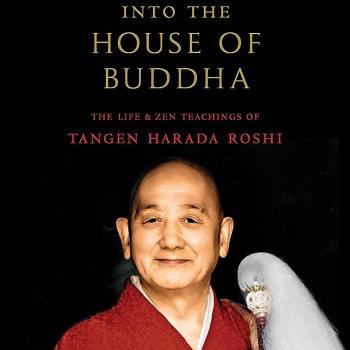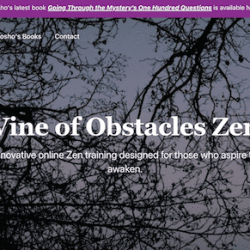Above is Yugeji practitioner Shodo and dog Bodhi. Which is the original face? What is intimate knowing?
More on that in a moment. First an observsation. In studying the Genjokoan again, what’s striking me now is how D-z really isn’t presenting an argument. Instead of Nagarjuna’s logic (not A, not B, not both, not neither) or Diamond Sutra logic (A is not A therefore A is A) what we have here is a series of declarative sentences expressing the enlightened mind – from Dogen’s perspective, of course.
Dogen takes the stance of the authority stating how it really is. We can then take what’s offered as the object of belief OR we can take up the work of verifying it (or rejecting it) for ourselves. Same material, very different processes.
Now let’s move to intimate knowing and the next sentence, a very straightforward practice instruction that defines enlightenment. Here’s my bare-bones translation:
See forms with the whole body-mind, hear sounds with the whole body-mind – intimate knowing!
We usually think of seeing with the eyes and hearing with the ears. Instead, Dogen defines the freeing-from-suffering gnosis of the Buddhas as the whole body-mind’s intimate knowing, simultaneously encouraging us to see and hear (taste, touch, smell, and think) with the whole body-mind.
The key then becomes this “whole body-mind” – what is it? Does it begin when we’re born and end when we die? Does it start at the tip of our toes and end at the top of our head?
An idea of the whole body-mind won’t do. Intuiting whole body-mind intimately is what is necessary.
How can we do that? See. Hear.
Capping phrases
“Only when the eyes are blinded and the ears are clogged up does true enlightenment occur.”
“Mind and objects – self and the realm outside – are crushed all at once.”
– Both of the above from Bokusan’s commentary on this sentence.
Points for reflection and comment (practice period participants, please post here, and others are welcome to comment too):
– How does kneading the Genjokoan line into the belly of your practice body, impact how you see, hear, taste, touch, smell, and think?
– Find a capping phrase to express your process working with the above instruction.











